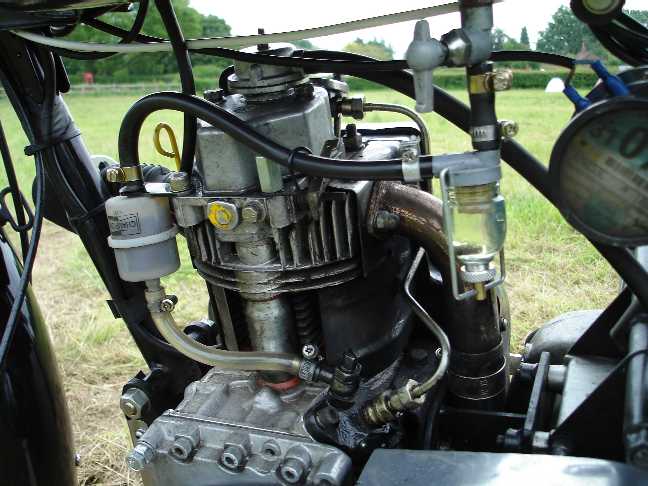So barrel and piston installed, and it's time to refit the head. On this type of motor it's vital to get the correct head to piston clearance, in this case 0.6-0.7mm. The approved method is to set the piston at TDC and place a straight edge over the barrel and measure the gap to the piston crown with feeler gauges - easy done 0.3mm. Subtract this figure from the required clearance and you get 0.3-0.4mm - this is the head gasket thickness needed.
First problem - the thinnest available is 0.55 so I fitted this and then torqued the head down and remeasures the piston clearance with the old 2 stroke tuners "bit of solder down the plug hole" technique, although in this case it's the injector. So poke a bit of solder in the chamber and ease the piston over TDC, remove the solder and measure with a micrometer - 0.65mm bang in the middle.
A bigger gap means a lower compression and lower power, but too close and the piston could hit the head with disastrous consequences.
So, reassemble the injector,rockers and pushrods, squirt a bit of oil over the valve gear, put the top cover on and its time to go for engine start.
Ease the engine over compression with the kick starter, listen for the injector to "gronk" and the decomp lever flicks off, gather forces and take a swing at the kick starter. Of course there is a bit more air to compress now and a better sealing piston to boot - consequence; the engine bounces off compression and i spend the next few minutes limping around the driveway cursing under my breath - repeat the experience three more times.
On the fifth time I was successful and the bike starts with a big bang and a large amount of smoke from the 2 stroke oil I've lubed the barrel with but settles down to an uneven beat as the regulator tries to keep the cold engine running.- Huston we have ignition!
I left the injector pump settings as they were for a few days to allow the piston and rings to bed in, then opened the max inject setting by a quarter of a turn.
The result is the bike will now climb Warley hill in top gear and will hit 50mph in most conditions. The vibes are worse though, a result of the heavier piston no doubt. I'm toying with the idea of another tooth on the gearbox sprocket as this should improve the top speed to the mid 50's.
All in all - a great success!

